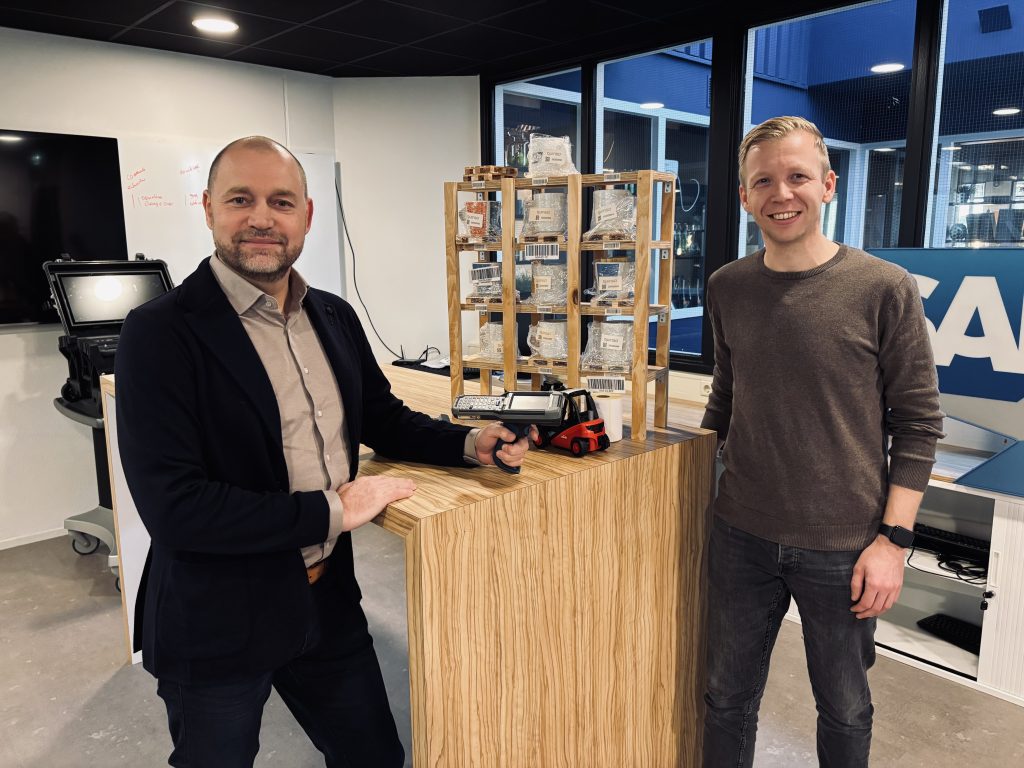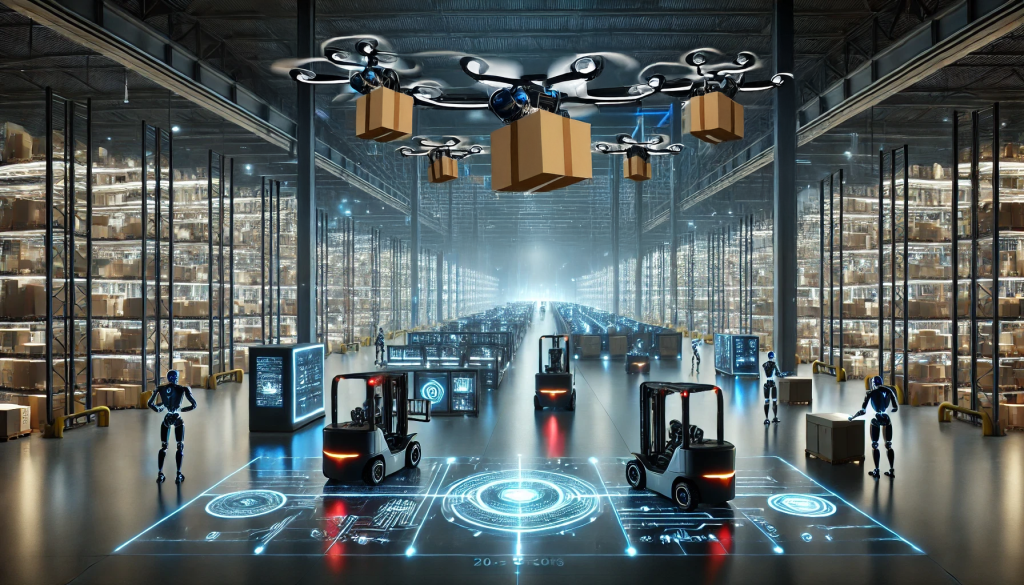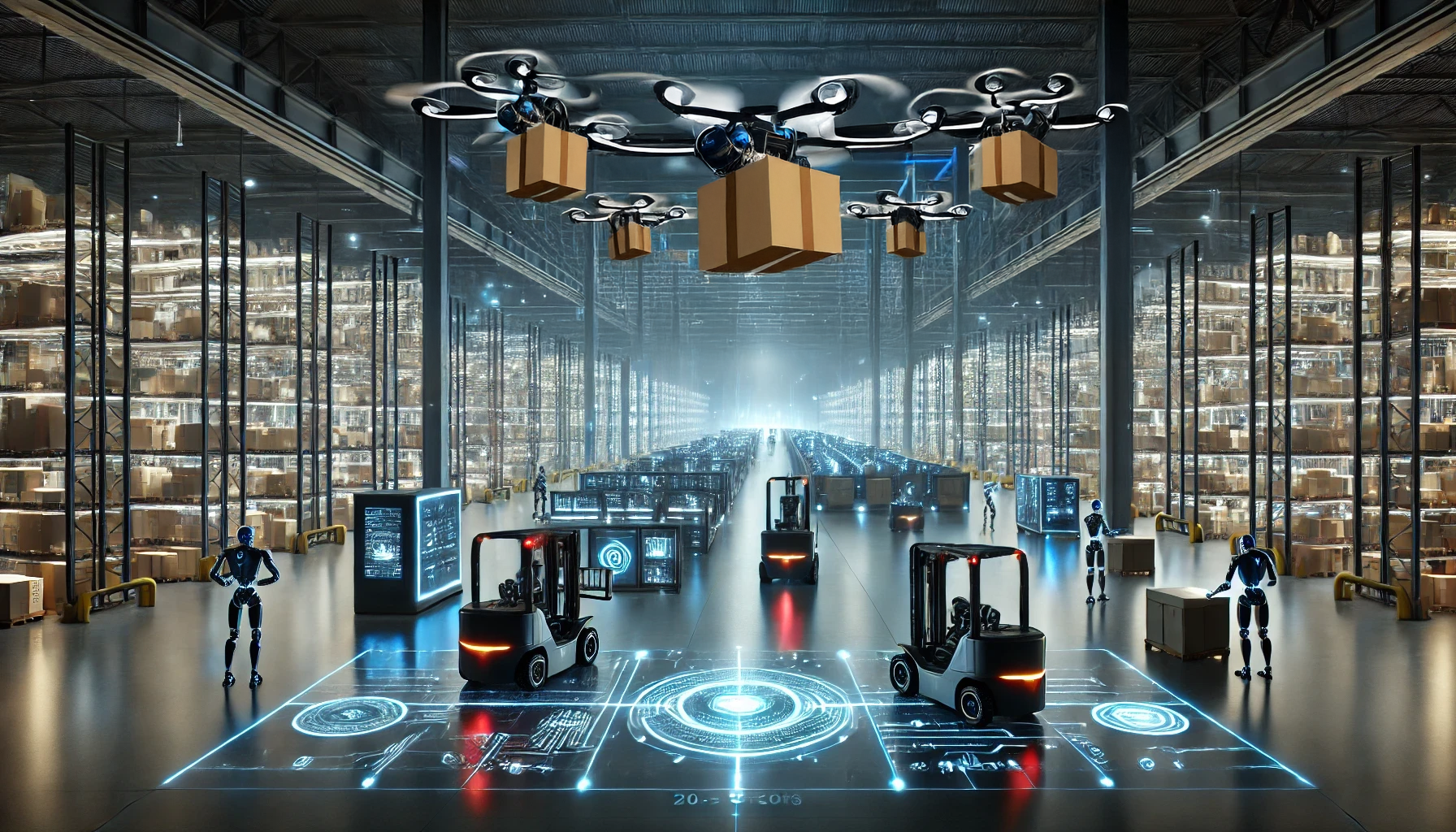Imagine a warehouse where robots autonomously stack pallets, drones soar through the air to check stock and humans perform mostly supervisory tasks. This future is closer than you think. Twenty years from now, warehouses will function completely differently than they do today. Companies that embrace these advances are already taking steps toward digital transformation and advanced automation.
But what exactly does this future look like? In this article, Dick Verburg and Mark Kokkeler, both Business Consultant at Quinso, take you into the future of warehouses, where robots, AI and smart logistics solutions are becoming the norm. They take you into their daily practice, share their vision on the new developments and let you discover how you can take the first step towards the warehouse of tomorrow.

In 5-10 years: automation and supervisory role for employees
Today, many warehouses already have automation and digitization, but the human element remains essential.
“In the next 5 to 10 years, we will see a shift to even more integration of technology and automation,” said Mark Kokkeler, Business Consultant. “Think Automated Guided Vehicles (AGVs) that autonomously navigate the warehouse and move goods. Or cobots, collaborative robots. These are robots that work alongside warehouse workers and can assist with heavy or repetitive tasks. Also, in the coming years, the role of the employee will increasingly shift to a supervisory role that checks that the technology is working properly. At a number of large retailers, they are working on solutions that use drones to monitor inventory levels. This means that employees no longer have to physically walk through the warehouse to check inventory – a drone can do that more efficiently and with fewer errors. And what is already a reality: warehouse where no more people walk, but where only trays move back and forth.
Dick and Mark list for you the 5 developments they expect in the next 5-10 years:
- Increased Automation
Warehouses are expected to incorporate a higher level of automation, with robots taking over much of the physical work, such as picking, packing and sorting goods. These robots will likely be powered by advanced algorithms to maximize efficiency. - Internet of Things (IoT)
IoT technology will play a crucial role, with sensors and smart devices providing real-time data for inventory management and logistics processes. This will lead to better tracking of goods and an optimized supply chain. - Artificial Intelligence (AI) and Machine Learning
AI will be used to predict inventory levels, optimize storage space and manage the flow of goods in and out. Machine learning can also help continuously improve operations by recognizing patterns in data. - Personalization and flexibility
Warehouses will be increasingly customized to meet specific business and customer needs, with flexible spaces and modular systems that can be quickly adapted to changing market conditions. - Advanced software for inventory management and logistics
Software solutions will become more complex and co-integrated, with capabilities to manage and optimize the entire supply chain in real time. These systems will likely be cloud-based to provide scalability and accessibility.
In 20 years: full automation and exceptions will be resolved by employees
If cobots, drones and self-driving vehicles are already going to become the norm in warehouses within a decade, what will a warehouse look like in 20 years?
‘Humanless and dark’ is Dick’s answer. ‘Twenty years from now, people will mainly be involved in solving exceptions. The bulk of the work – the physical moving of goods, inventory management, order prioritization, maintenance planning, even quality control – will be fully automated,’ he says. ‘AI will then play a major role in making daily operational decisions and managing warehouse operations, allowing managers to focus on strategic choices.’

Together, Dick and Mark brainstormed what warehouses might look like 20 years from now. The expected situation in 5-10 years, they kept as a starting point. Read their ideas here
- Full Automation
By this time, warehouses could be fully automated, with little to no human intervention in daily operations. This includes robots operating autonomously, drones for inventory and delivery, and self-driving vehicles for transportation inside and outside the warehouse. - Internet of Things (IoT) and network integration
IoT will be even more integrated, with all devices, tools and assets constantly communicating with each other over an ultra-fast and secure Internet network. This extensive connectivity will help create a seamless operation where supply chain needs are managed in real-time. - Advanced Artificial Intelligence (AI)
AI systems are likely to go far beyond current predictive analytics and be used for complex decision-making, problem solving and optimization of logistics processes. These systems may be self-learning, allowing them to continuously improve without human input. - Adaptability and modularity
Warehouses will be extremely adaptable and modular, designed to quickly scale or reconfigure depending on changing market conditions or business strategies. This may mean that certain sections of a warehouse can be temporarily set up for specific tasks such as seasonal storage, emergencies, or special projects. - Hyperconnected and cloud-based software systems
Software for inventory management and logistics will run entirely in the cloud, with real-time data and analytics accessible from any location worldwide. These systems will be fully integrated with external suppliers, customers, and even competitor companies to support a globally optimized supply chain.
From employee to manager of robots
‘The challenge for employees becomes seeing robots as colleagues. This development is characteristic of what Industry 5.0 will look like,’ says Mark. ‘We are already noticing with customers that warehouse workers sometimes have to adapt to technology. At one customer, for example, a forklift driver rebelled when he had to learn to work with a scanner instead of paper forms. Eventually it turned out that the scanner worked more accurately and he was convinced anyway.’
Challenges for IT and Supply Chain Managers.
For IT managers, this future brings new challenges. Dick: ‘The integration and manageability of systems is becoming increasingly complex. IT managers are responsible for a system that not only supports the needs of supply chain managers, but is also scalable and flexible enough to respond to future changes.’
Supply chain managers face different challenges again. They want their warehouses not only to operate efficiently and error-free, but also to be able to respond quickly to market fluctuations.
Rob and Emma in action
At Quinso, we like to think about how we can support IT and Supply Chain Managers with these challenges and how we embrace all technological developments in the process. So we challenged each other to work in teams to come up with new innovative products with the Quinso Challenge. The winning solution? AI characters Rob and Emma as buddies for warehouse workers to double their productivity. Emma who monitors the physical and mental well-being of the employee by analyzing data from a wearable and gives tips and advice to the employee based on that data. Rob who ensures that the employee is in the right place in the warehouse as easily and efficiently as possible, picking the right orders and getting a signal if a wrong delivery is ready. The video below shows it. With a future-proof system like SAP EWM, your warehouse is ready for innovations like these.
Already a digital and smart warehouse with SAP EWM
SAP EWM ensures that your warehouse is fully digital and smartly organized. Employees no longer have to lug around forms; instead, they work with handy scanners that instantly track every order. Smart algorithms calculate optimal locations for products, reducing walking distances and optimizing warehouse space.
In addition, SAP EWM is both manageable and scalable. Complex links are a thing of the past, as the system integrates seamlessly with other systems. And do adjustments need to be made quickly, for example due to changing warehouse strategies? SAP EWM is designed to respond flexibly to these requests, without having to worry about restrictive system structures.
The result? Less lost time, higher productivity, and satisfied customers who know they can count on timely deliveries. Dick: “With SAP EWM, we ensure that warehouses are not only ready for the future, but can already operate smarter and more efficiently today.”
Why Dick and Mark feel so familiar in the warehouse
Mark: “What I like about my job is the crucial role warehouse efficiency plays for customer satisfaction and achieving KPIs. Many people don’t realize how important the proper functioning of the warehouse is to achieving business goals. That’s why I put myself on the shop floor to really make a difference and contribute to the optimization of their operations, which directly affects their success. Dick is also right at home in the warehouse: “I am by nature very fond of structure and clarity. I always want to bring that into my work and also outside of it. In a warehouse I can give maximum substance to that. And with the Quinso mentality of rolling up my sleeves and having a good time, I do exactly what I do best and what gives me energy.




